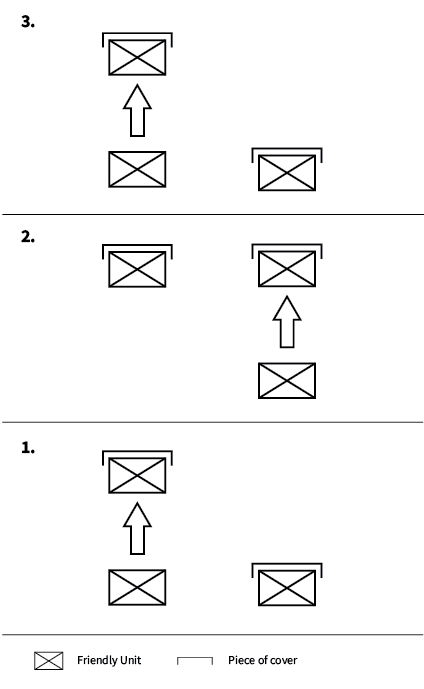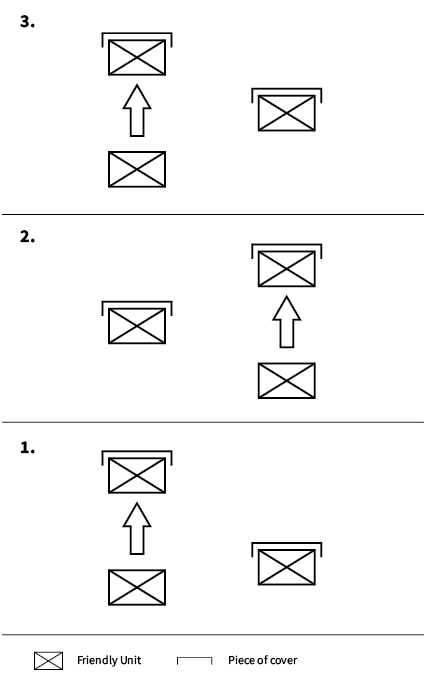Bounding
Bounding is a tactical movement technique that allows a team to advance while minimizing exposure. It involves one element holding security and overwatch while another moves forward to the next piece of cover. Once in position, the roles switch. This method allows sections or fireteams to advance through dangerous areas without exposing the entire unit at once. The technique is essential for safe movement across open terrain and during engagements.
Key Principles
- Only one element moves at a time; the other must always provide security.
- Cover and concealment should be used at every bound.
- Communication between moving and covering elements is critical.
- Movement should be quick, deliberate, and synchronized.
Application
Types of Bounding
Bounding can be conducted using two primary techniques:
Succesive Bounding

Units move forward to a new cover position while remaining roughly on the same line.Successive bounds maintain tighter cohesion and are used when aution is more important than speed.
Alternate Bounding

Units move forward past the stationary element, leapfrogging to gain ground faster. Alternate bounding is faster but can stretch the unit if not carefully coordinated.
-
Successive Bounding:
- Units move forward to cover but stay aligned.
- Used when caution, mutual support, and tight spacing are critical.
-
Alternate Bounding:
- Moving units leap past the covering units to advance faster.
- Used when speed and aggression are necessary.
| Technique | When to Use | Key Advantage |
|---|---|---|
| Successive Bounding | Cautious, cohesive advance | Better control and spacing |
| Alternate Bounding | Fast, aggressive maneuver | Covers ground quickly |
Basic Bounding Sequence
-
Covering Element Establishes Position
- Sets up security and scans ahead.
-
Moving Element Advances
- On signal, moves quickly to next piece of cover or concealment.
-
Call Out When Set
- Moving element calls “Set!” or similar to confirm safe arrival.
-
Switch Roles
- Covering element becomes the next to move.
Bounding Overwatch
Used when enemy contact is highly likely or confirmed.
One element provides active overwatch while the other bounds cautiously.
- Prioritize deliberate movement.
- Use terrain to maintain line of sight between elements.
- Ideal when advancing toward enemy-held objectives.
Common Mistakes
- Both elements moving simultaneously, exposing the entire unit.
- Failing to communicate clearly when set or moving.
- Choosing poor cover or halting in the open.
- Losing visual or firing support between bounding elements.
- Moving without scanning after each bound.
Summary
Bounding is a core team movement technique that balances mobility with protection.
By alternating movement and overwatch between elements, a section can maintain pressure, momentum, and survivability under combat conditions.
Clear communication, discipline, and good cover usage are essential to effective bounding operations.